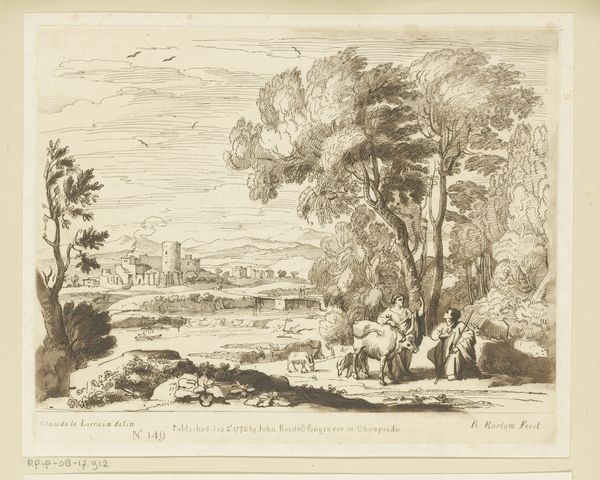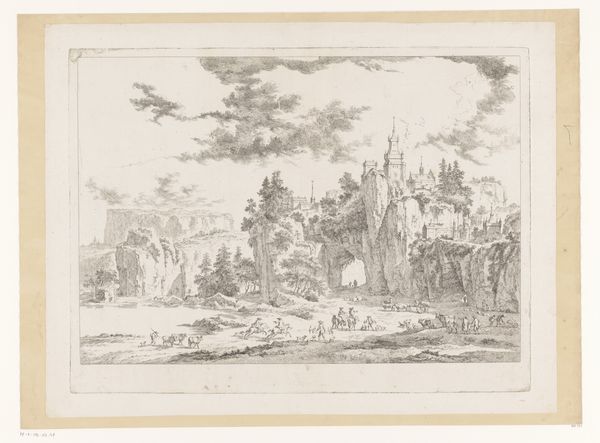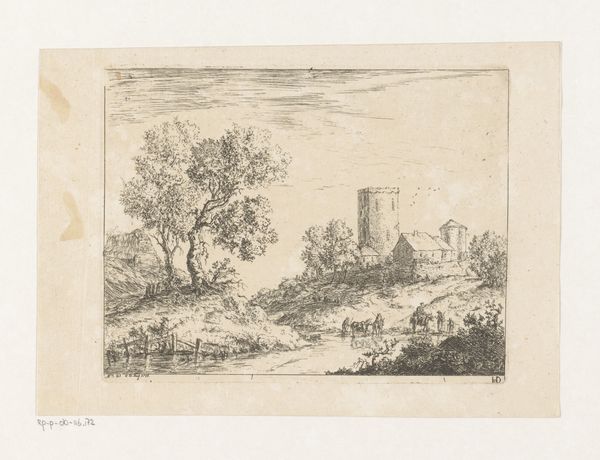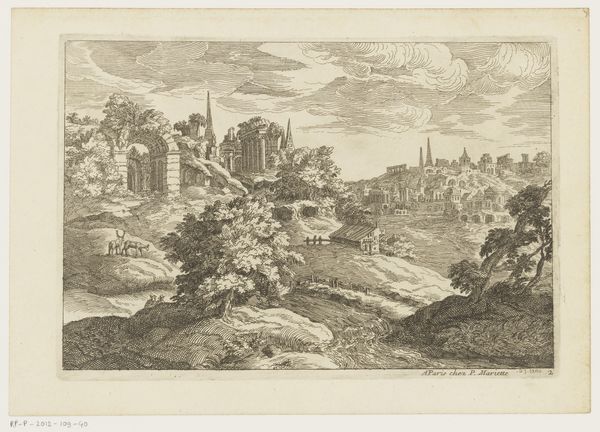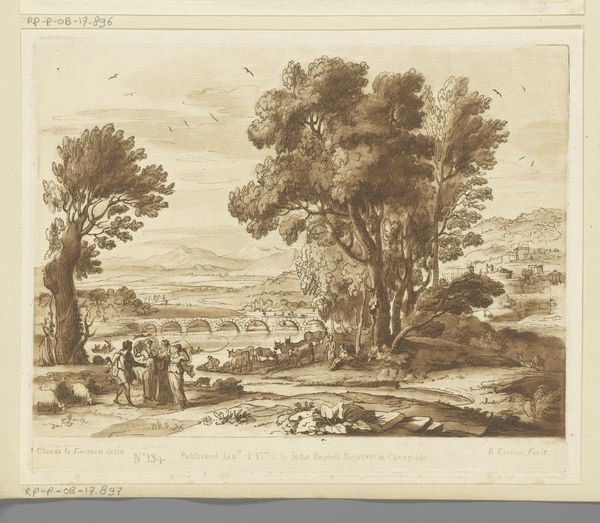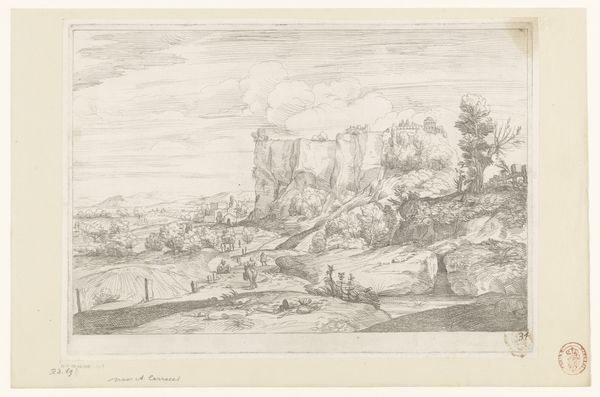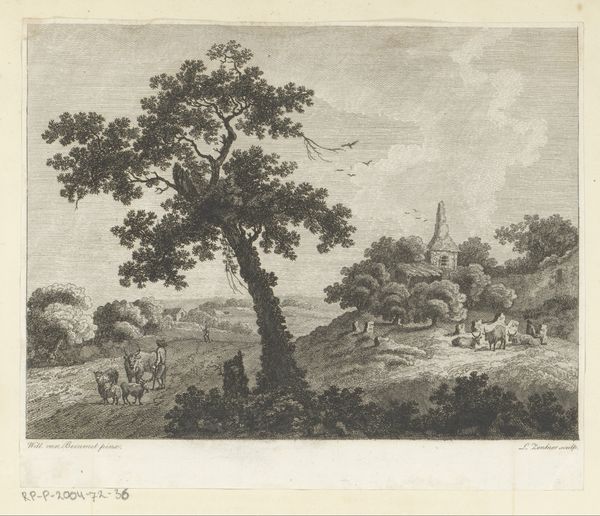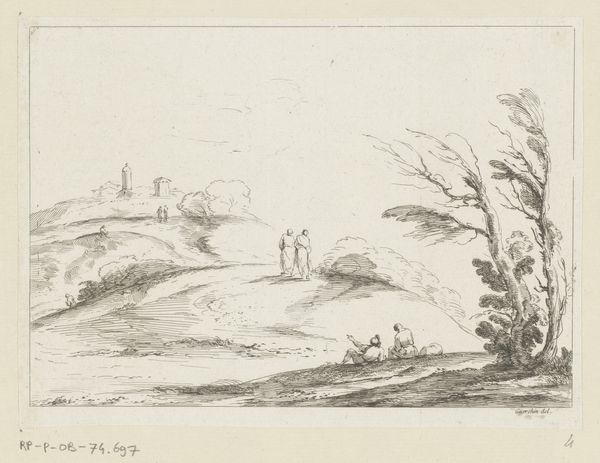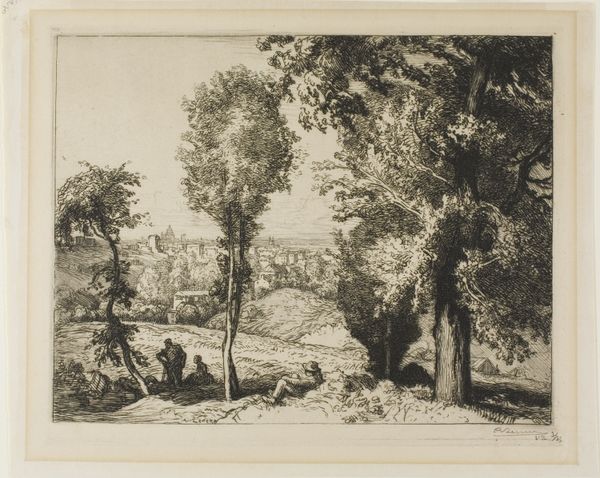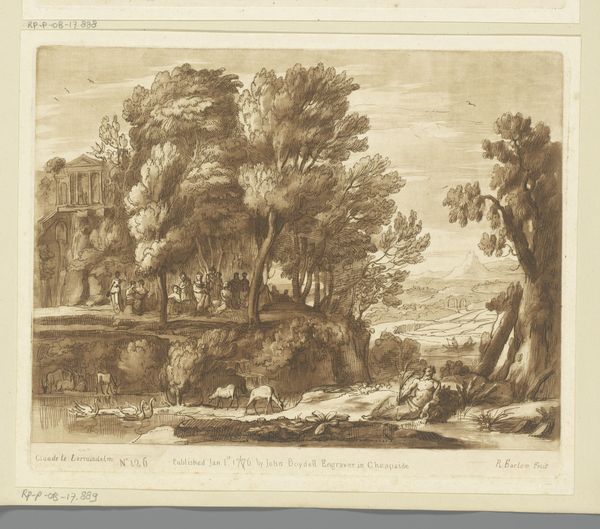
drawing, ink, graphite, architecture
#
drawing
#
neoclacissism
#
landscape
#
etching
#
personal sketchbook
#
ink
#
graphite
#
cityscape
#
architecture
Copyright: Public Domain
Curator: At first glance, I find it quite somber. A monochrome rendering of an open space. It gives a sense of classical order with these architectural forms but they seem quite solitary. Editor: Indeed. What we're looking at here is Conrad Horny's "Classical Landscape," crafted around 1790. You know, landscapes like this became fashionable as people began reevaluating how the state could serve public interest, with open space available to anyone. Horny captured this moment quite elegantly here. It’s held in the Städel Museum. Curator: Absolutely, and you notice the sepia tones? I’m seeing ink and graphite and this gives it that dream-like quality, reminiscent of etchings. What a study in light! The obelisk there to the left really does call out to some former ideal or public dream. Editor: It also reflects a very particular period; Neo-classicism. With these echoes of Roman antiquity it almost serves as a melancholic memento, an elegy of sorts. Horny really encapsulates something that would later impact architects, town planners, philosophers alike, who began examining the utility and use of open land. And I also appreciate how his landscapes differ quite a bit from someone like Turner, though in a very similar style and palette! Curator: It does seem less focused on natural majesty than it is on human structures or past power dynamics—ruins! Note how these aren't simply landscapes but idealized architectural compositions. But what’s really interesting to me are those figures… do you think Horny was playing with a wider conversation on public discourse? I ask because their placement isn’t very intentional at all. They could almost not exist there at all. Editor: That could very well be true! Because Neoclassicism sought order and balance, its practitioners found it difficult to merge political dimensions together in the work, sometimes for worse, other times, simply out of its need to maintain this illusion of perfect form and harmony. The question is where is art going in public life. And to me that remains unanswered with a lot of artists! Curator: Agreed, and I would also like to add that landscapes like this reveal how notions of citizenship, access, and aesthetic preference were intricately tied up. Editor: Thanks. It makes you ponder what are those underlying sociopolitical motives behind this seemingly calm and idyllic rendering?
Comments
No comments
Be the first to comment and join the conversation on the ultimate creative platform.
